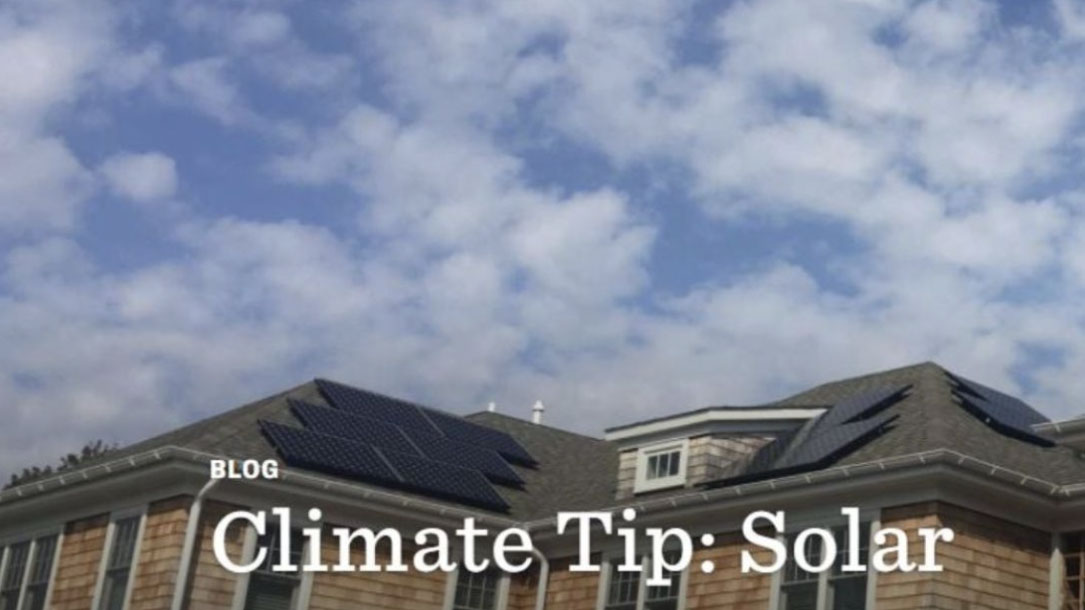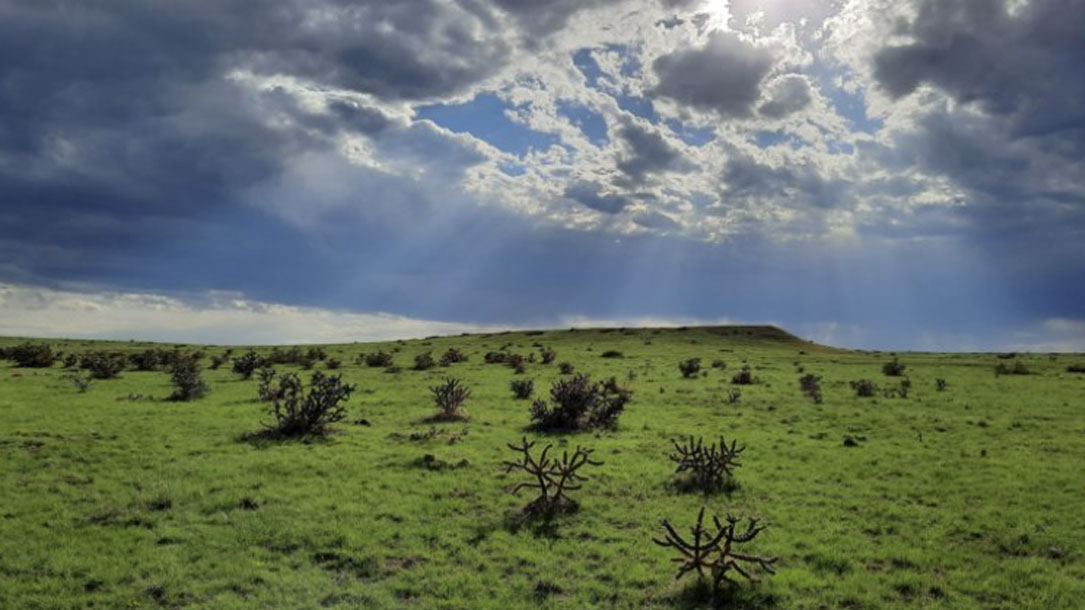Home > Climate News >

Climate tip: solar
[Recently, the Peconic Land Trust] celebrated National Cut Your Energy Cost Day with a look at our own energy costs. The Peconic Land Trust has been working to cut its energy costs through the use of solar panels—which is both economically and environmentally friendly. The net cost of solar is significantly lower than the current cost of utility power on Long Island, $0.09/ kWH to $0.21/ kWh respectively.
During the renovation of the Southampton office building in 2017, 32 solar panels were installed on the roof by GreenLogic. Since then, the panels have produced over 45,000 kWh of energy at a savings of more than $10,000! Power on Long Island comes from a combination of sources including coal and natural gas…

Building more resilient human and natural communities
Stronger storms, increased rainfall, and periodic droughts are all part of our new normal. Conservation Trust for North Carolina is rising to the challenge our changing climate brings by partnering with affected communities to identify ways that healthy lands can better support and protect people. Including land conservation in larger plans for reducing the carbon output of our state and lessening impacts to communities, we can build a resilient North Carolina.
Conserving land for climate resilience is a top priority for all North Carolinians. Informed by climate science data, we know that taking steps to protect highly resilient property along the Blue Ridge Parkway is valuable to communities long into the future, even as natural areas, wildlife habitat and species change in response to the climate. We are ready to take this purposeful approach….

How to Solar Now
Land trusts are realizing that they must support renewable energy if we are going to have a chance at saving the plants, animals, and communities from the worst of climate change.
This web-based interactive tool combines mapped information with education and guidance to help your community proactively plan for smart solar energy development. Using Geographic Information System (GIS) mapping layers, the tool identifies communities’ natural resources—such as forests, agricultural lands, and wetlands—and overlays them with important characteristics for solar development, such as gentle slopes and distance to transmission lines. It enables communities considering planning and zoning for future solar development, evaluating proposals by developers or identifying preferred sites for solar to make smart decisions that bring clean energy to residents while minimizing impacts to natural and community assets…

Climate ‘champion’ Katharine Hayhoe joins Nature Conservancy as chief scientist
“Katharine Hayhoe, a climate scientist at Texas Tech University and prominent climate communicator, is joining the Nature Conservancy as its next chief scientist, the organization announced Monday.
Hayhoe will be stepping down as co-director of her university’s climate center but will still hold an academic appointment while being involved with the environmental group, where she will play a leading role in its global climate advocacy and adaptation work. Her scientific research has long focused on adaptation and resiliency, two priority areas for the Nature Conservancy…”

Protocols for bird-friendly habitat management certification
Audubon and its partner ranchers employ a variety of tactics to manage the land upon which cows graze. Together, these tactics are what leads to Audubon’s certification that certain beef products are produced with bird-friendly land-management practices
To get certification, ranchers follow a set of program standards in four areas: habitat management; forage and feeding; animal health and welfare; and environmental sustainability…

What in the world is conservation ranching?
“Wild bison were unwitting conservationists. As they roved the Great Plains, snacking here, trampling there, the hefty mammal carved diverse plant landscapes for any species’ nesting, mating, or hunting requirements. When humans substituted these shaggy ungulates for cows, the territory transformed. Without guidance, cattle mow fields to a single height and encourage only a couple plants to rebound. Few birds thrive in this monotony…”

Medford Spring Grassland Conservation
“Grasslands store one-third of the Earth’s carbon, and just one acre of grassland can store an estimated 50 tonnes of carbon or more. Yet, in the U.S., over one million acres of grassland are still converted each year, which has the potential to release 50%-70% of the carbon they hold as carbon dioxide (CO₂).
The Medford Spring grasslands in southeastern Colorado are facing an imminent threat of conversion to cropland given its soils are suitable for farming, and cropland rental rates for winter wheat, milo, sorghum, alfalfa, and other row crops, are more than five times pastureland rates in Bent County, CO. A permanent conservation easement will preserve the grasslands and avoid conversion of the land to farming or development. This will prevent an estimated 190,000 tonnes of CO₂ from entering the atmosphere over the next 50 years. This is the equivalent of almost 208 million pounds of coal burned…”

The Climate Action Reserve
“As the premier carbon offset registry for the North American carbon market, the Climate Action Reserve encourages action to reduce greenhouse gas (GHG) emissions by ensuring the environmental integrity and financial benefit of emissions reduction projects.
The Reserve establishes high quality standards for carbon offset projects, oversees independent third-party verification bodies, issues carbon credits generated from such projects and tracks the transaction of credits over time in a transparent, publicly-accessible system.
The Reserve offsets program demonstrates that high-quality carbon offsets foster real reductions in GHG pollution, support activities that reduce local air pollution, spur growth in new green technologies and allow emission reduction goals to be met at lower cost…”

Carbon offset program
Southern Plains Land Trust (SPLT) has enrolled [their] two largest preserves, Raven’s Nest Nature Preserve and Heartland Ranch, under the Climate Action Reserve’s Grassland Protocol. These properties sequester over 10,000 metric tonnes of carbon annually. Sale of these carbon credits creates the ultimate feedback loop: carbon sales generate revenue for SPLT to protect more grasslands, which sequester more carbon and provide refuges for more wildlife.
This is exemplified by SPLT’s partnership with NativeEnergy: a forward sale of carbon credits on the Medford Spring Grassland Conservation area enabled SPLT to add this area to Heartland Ranch, thus increasing the size of this property from 18,000 acres to its current size of 25,000 acres…

Solar installation—Matsuda Farm
Does your land trust have an opportunity to install solar on its lands as part of an overall project, and education strategy?
The Vashon-Maury Island Land Trust is passionate about conserving land to protect the natural ecosystems and rural character of their islands amidst today’s rampant development. They created a video to talk about a solar installation on a farm they own and how it relates to their conservation goals.












